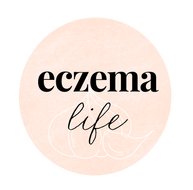What is Childhood Seborrhoeic Eczema?

Childhood seborrhoeic eczema is usually seen in infants under the age of one. The nappy area is often affected first, and can appear quite suddenly between two and six months after birth. Childhood seborrhoeic eczema tends to spread fairly rapidly to the scalp (known as cradle cap), face, neck, armpits and sometimes even the trunk. However, symptoms may be temporary and can soon improve.
Nappy Rash
In the nappy area, the skin usually looks inflamed, red and flaky, and the surface may feel rough due to small blisters. Scales in this area are small and white, and usually rub off easily making the skin look shiny. Sometimes it spreads up the body and down the legs, when small round or oval patches are seen, which later join together to form larger red areas. Not all nappy rashes are classed as childhood seborrhoeic eczema.
Cradle Cap
On the scalp, the scales are larger, greasy and yellowish – they tend to stick to the head making it look crusted. The forehead, temples, eyebrows, back of neck, behind the ears and folds at the sides of the nose are often also affected.
Childhood seborrhoeic eczema is not usually itchy, sore or uncomfortable, so your baby should feed, play and sleep as usual, and hopefully be undisturbed by it.
Treatment plans for Cradle Cap can be found on our blog HERE
Fischer, K., 2014, 'What is eczema?' edited extract from The Eczema Diet, Second edition, Exisle Publishing.
What is the difference between eczema and dermatitis?
